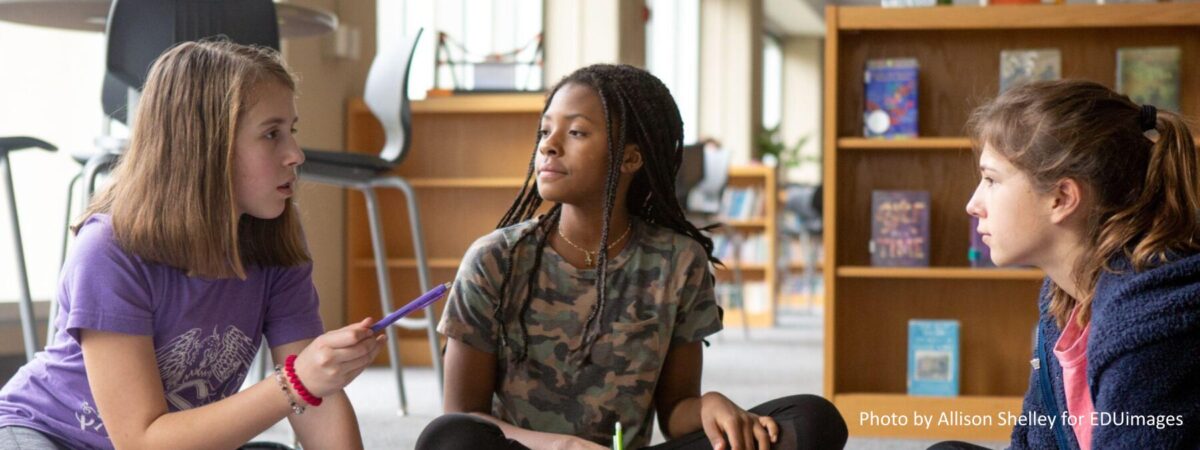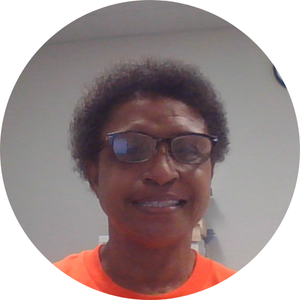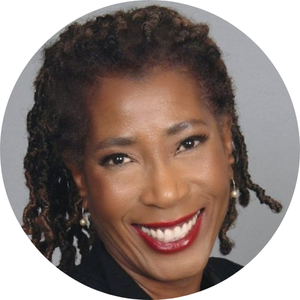
We asked educators who are experts in collaborative learning to share some advice for preparing classrooms and learners for collaborative learning. Here’s what they said:
 Sarah DiMaria
Sarah DiMariaMath Teacher and Instructional Coach, Cedars International Next Generation High School (Texas)
If you are not in a school that regularly collaborates, something important to note when moving to more collaborative styles is that you and your students are learning how to engage in this type of learning. It takes time. Make time for reflection after more collaborative activities.
If you are new to this work, start small. Introduce group roles or norms into the work you already do. I find using group roles incredibly powerful. I define the roles in the task to scaffold both successful collaboration and learning. Each role is defined for the particular task to allow students to take ownership over the work, focus on the learning goal, and participate equitably. For example, the facilitator in the task makes sure everyone is contributing to the task.
Make moves to incorporate collaborative strategies into comfortable practices. Slowly add more and more as you transition your class to a collaborative working environment.
If you are new to this work, start small. Introduce group roles or norms into the work you already do. — Sarah DiMaria
 Chris Barth
Chris BarthTeacher, Reedy Creek Magnet Middle School (North Carolina)
As a new teacher you will have some days when you walk out of the building totally exhausted. Often the reason that you ended the day so exhausted is that you stood in front of the room all day, and talked the whole time. This is what a teacher does, right? We talk and espouse knowledge, students listen and learn. Wrong!
Students learn best when they are actively engaged in their learning—for example, students working together, challenging and encouraging each other to create a more accurate scale model of the solar system. Engaged students make happy teachers.
 Dr. Beverly Yeadon
Dr. Beverly YeadonCoach, Lake Marion Middle School (South Carolina)
Encourage students to be true to their thoughts and ideas, but remain open to the views of others. Build a community of learners who listen to each other free from judgment, keep an open mind, and be prepared to share a few statements about what was shared and make connections when possible. And finally, set the stage for rich discussions and create a risk-free and safe collaborative learning environment.
Encourage students to be true to their thoughts and ideas, but remain open to the views of others. — Dr. Beverly Yeadon
 Valerie Crawford Meyer
Valerie Crawford MeyerCoach and Teacher, McNicol Middle School (Florida)
I introduce my students to problem solving and collaborative learning skills with the Paper Tower build. This beginning of the year activity creates communication and collaboration with classmates in order to solve a problem: building a stable tower. It identifies different strategies used to solve a problem and has students iteratively improve on a solution to a problem, while building collaborative bonds.
 Kip Glazer
Kip GlazerPrincipal, Mountain View High School (California)
From a school leader’s perspective, collaborative learning practices require time to take root. Doing it well requires repetition and patience, and the leaders need to encourage their staff to persist.
 Kelly Powers
Kelly PowersComputer Science Teacher, Middle School, Hackley School (New York)
Building productive classroom discourse where all students engage in building knowledge to reap proven benefits takes time. One tip for getting started is to use a format of pair/collaboration. With this format, students respond to prompts in random pair assignments (that change daily) to practice listening, crafting thoughtful responses, and reasoning. I call on different pairs to share their thoughts with the whole class. I do this each day for about a month to establish the culture and routine as well as connections among students. This helps students feel comfortable thinking together, contributing, and seeing how their contributions are valued and matter.
Building productive classroom discourse where all students engage in building knowledge to reap proven benefits takes time. — Kelly Powers
 Sarah Hampton
Sarah HamptonCoach, Greenbrier County Schools (West Virginia)
One thing I think about when planning for collaboration is how to set and reinforce expectations for positive group interactions up front. For example, it’s important to make these kinds of goals explicit during a collaborative activity and then reinforce them verbally and/or with a rubric, such as:
Students don’t automatically know how to collaborate just like they don’t automatically know how to factor an algebraic expression. It makes sense that we need to thoughtfully plan for how to help them develop both kinds of skills.
Treating learning disposition standards with the same importance as content standards has changed how I think about planning, facilitating instruction, and assessing student learning and has encouraged me to promote more collaborative activities.
Personalized Learning Lab Teacher, The Net Charter High School (Louisiana)
As a foundation for collaboration, I set up a culture of belonging in my classroom. I incorporate culturally responsive materials that bring past and present realities of students’ lives into the curriculum. When teaching about “la Francophonie,” for example, I find meaningful ways to connect students’ histories, cultures, and experiences by zooming in on our local context. Students are more engaged and more willing to participate or collaborate when asked to create a guided tour of French influences in the city, discuss experiences of natural disasters in New Orleans and Haiti, or compare Louisiana Creole culture to Acadian culture, than they are doing research about randomly assigned or chosen Francophone countries.
As a foundation for collaboration, I set up a culture of belonging in my classroom. I incorporate culturally responsive materials that bring past and present realities of students’ lives into the curriculum. — Parjest Thevenard
 London Jenks
London JenksTeacher, Hot Springs County High School (Wyoming)
While supporting productive student discourse, I have found that one of the greatest challenges is helping students deepen their reasoning and evidence around their ideas. I give students time to independently write their reasoning for 30 seconds to a minute. This helps them to solidify their reasoning for their ideas and explanations. As scaffolding, I ask students to utilize a supporting text or resource (like a textbook, reading, or video) as their evidence. I ask students to “put their finger” on their evidence. This helps them to recognize where their ideas are coming from and reinforces the skill of building new learning.
This material is based upon work supported by the National Science Foundation under grant 2101341. Any opinions, findings, and conclusions or recommendations expressed in this material are those of the author(s) and do not necessarily reflect the views of the National Science Foundation.